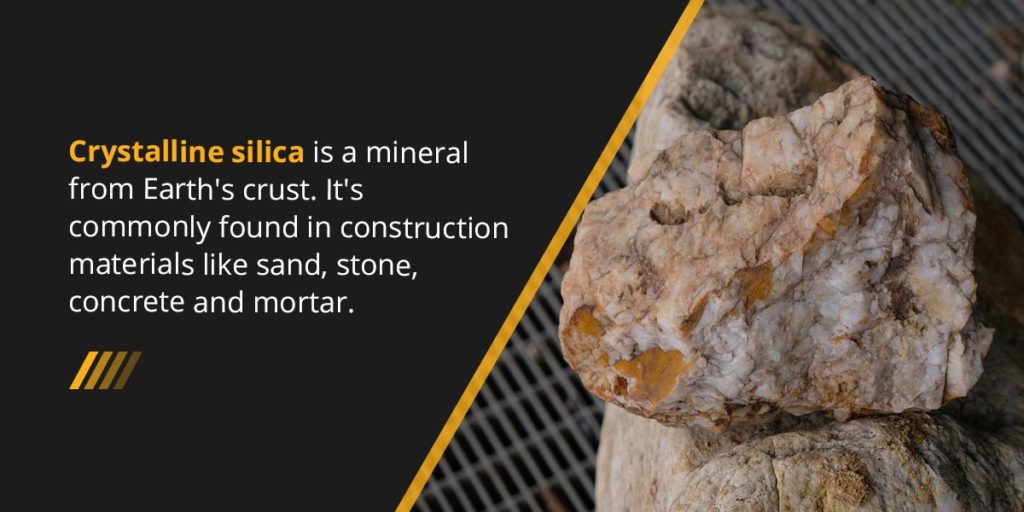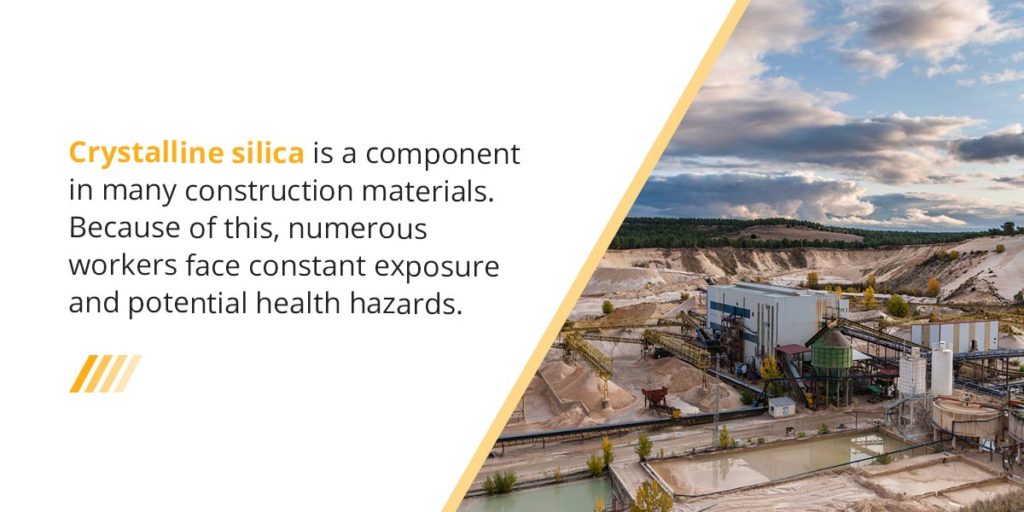Exposure to crystalline silica has always been a major concern due to its potential health risks. OSHA has established updated standards with stricter permissible limits to better protect workers from respirable silica exposure. At Finishing Systems, we prioritize the safety and well-being of our team members, and we believe you should too. We’re committed to keeping our valued customers informed about critical changes and developments within our industry. Should you have any questions or require further details regarding the revised silica standards, we recommend visiting OSHA’s official website or utilizing their On-Site Consultation Program for expert guidance. This program assists businesses in identifying and mitigating risks associated with silica and other workplace hazards. The new regulations apply to two primary sectors: While the construction worker standards came into effect on September 23, 2017, the provisions for general industry and maritime workers were implemented on June 23, 2018. These rules target workers who handle loose silica products, such as those involved in blasting, abrasion, foundry work, or anyone who performs tasks that generate airborne silica from solid materials like stone, masonry, concrete, and bricks. Crystalline silica is a natural mineral found in the Earth's crust. It is commonly present in construction materials like sand, stone, concrete, and mortar. Additionally, crystalline silica is utilized in manufacturing items such as glass, pottery, and ceramics. This mineral exists in several forms, including: When crystalline silica is ground into fine particles, it can easily enter the lungs, causing respiratory issues and potentially leading to serious health conditions. Respirable silica refers to silica dust small enough to be inhaled. These particles are at least 100 times smaller than a regular grain of sand. Various construction and industrial activities can release respirable silica during tasks like cutting, sawing, drilling, grinding, pulverizing, or crushing materials containing silica, such as stone, brick, and mortar. Other activities, such as abrasive blasting, hydraulic fracturing, and foundry work, can also generate respirable silica. When workers are not adequately protected, they risk inhaling this dust, which can lead to serious health complications, including: Crystalline silica is a key component in many construction materials. As a result, numerous workers face ongoing exposure and health risks. Activities such as sawing, drilling, and operating heavy machinery can cause crystalline silica to turn into respirable particles, which can then enter workers' lungs. Examples of tasks that may expose construction workers to crystalline silica include: According to OSHA estimates, over 600,000 workplaces encounter respirable silica annually. To mitigate these risks, OSHA has introduced comprehensive safety standards aimed at reducing silica exposure and protecting workers. OSHA standard 1926.1153 focuses on respirable crystalline silica exposure. It mandates that employers implement measures to limit worker exposure to silica and adopt protective strategies when necessary. Supervisors are required to follow OSHA-prescribed control methods or develop their own dust control plans. All workplaces dealing with crystalline silica must comply with the permissible exposure limit (PEL). Table 1 in OSHA’s respirable silica standard provides guidelines for various construction processes and recommended dust control methods. Employers are encouraged to use this table as a reference for ensuring worker safety. For instance, one entry in the table concerns operating a saw outdoors. According to the OSHA standard, if an employee operates the saw outside for no more than four hours, they may not need a respirator. However, if the operation lasts longer than four hours or occurs indoors, the employee must wear a respirator or utilize additional protective measures. Alternatively, employers who do not rely on Table 1 must calculate silica exposure levels and implement appropriate protective actions. They are required to employ dust control techniques and provide respirators where necessary. OSHA’s standard also requires employers to: Approximately 2 million Americans are exposed to silica during their careers. Without proper precautions, workers face significant risks. Solutions to prevent silica inhalation include: At Finishing Systems, we take the safety of our employees and clients very seriously. Recently, we conducted thorough monitoring and professional testing of our workplace to ensure compliance with current regulations. Contact us today to explore safety equipment and supplies that will help safeguard your business and its workforce. We offer an extensive range of safety products designed to protect what matters most in your workplace—your people! Hydraulic Power Unit For Tricycle Cleaner Hydraulic Power Unit For Tricycle Cleaner,Power Unit For Electric Garbage Removal Truck,Hydraulic Power Unit For Garbage Removal Truck,Garbage Removal Truck Hydraulic Power Unit Huai'an Sur Hydraulic Technology Co., Ltd , http://www.surhydraulic.com
New OSHA Silica Exposure Regulations
Last Updated: December 22, 2023

Understanding Crystalline Silica
The Impact of Silica Exposure

Common Sources of Crystalline Silica Exposure
OSHA’s Silica Exposure Standards
Preventing Crystalline Silica Inhalation

Securing Worker Safety With Proper Protection